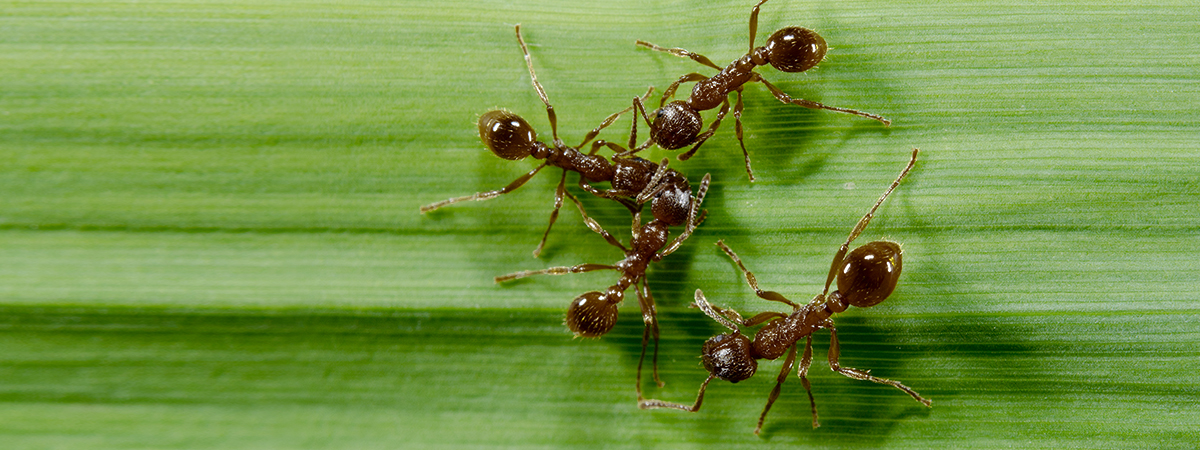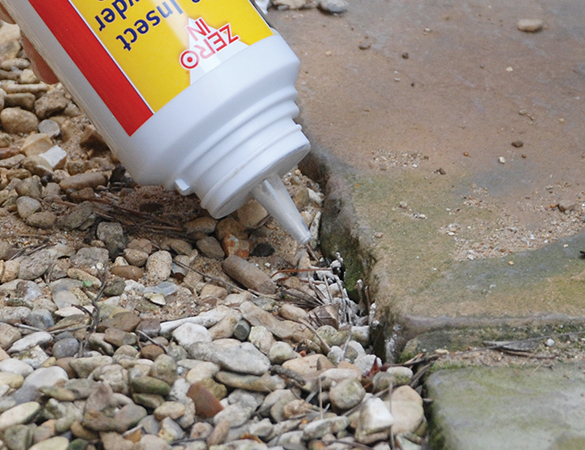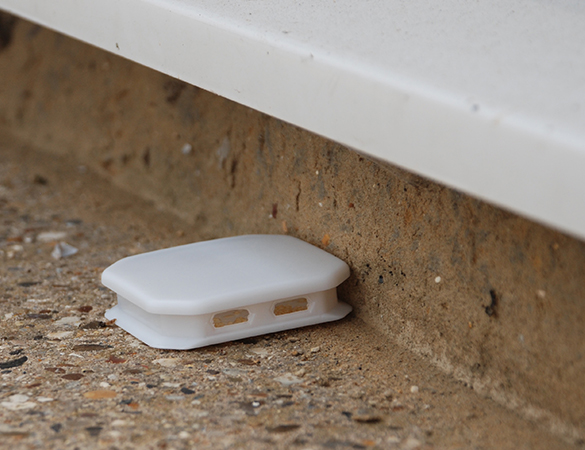I need help with...
Ants

There are over 12,000 species of ant (Formicidae) around the world. Their lifespan varies between species from just a few weeks to several years, typically growing no longer than an inch. The most common one that you’re likely to find in your home or garden is the Black Garden Ant (Lasius niger). Ants live in large groups or colonies, in nests.
A CLASS SYSTEM
Each member of a colony has a specified role. The worker ants have the objective of going out in search for food to bring back to the nest. Foraging leads them into homes, and anywhere they might find traces of edible material. Ants leave behind natural chemical trails to help mark ‘safe’ routes, which is why you often see ants travelling along the same lines.
The queen’s duty is to reproduce and lay eggs, to create enough ants to sustain the colony. Worker ants are infertile female members of the nest that work to keep the colony stable; male ants have the sole purpose of mating with new queens, typically dying soon afterwards.
FLYING ANT DAY
Ants that are capable of mating (known as alates) have wings, and every year between June and August these ants take to the air to meet mating partners. The mating takes place in the air and females fly off to create nests and colonies of their own. Although it’s referred to as ‘a day’, it can actually last for a couple of weeks as temperatures change. There’s safety in numbers, with ants opting to swarm during mating to provide a degree of protection from predators. This also increases their chances of finding a mate. Once mated, the wings of the females are useless so they chew them off, before looking for an appropriate site to build their own nest.
SIGNS OF INFESTATION
The typical tell-tale sign of an ant infestation is seeing the ants running around. The number of ants you see is an indicator of the size of the infestation.
Small piles of soil or dirt outside holes in the ground can indicate the presence of a nest. These are often located in sunny spots outside, within wall cavities, or under paving slabs. Nests are often intricate tunnels underground, in mounds or within trees.
PREVENTION
Ensure spilled food or cooking residues are cleaned up quickly. For example, clean down BBQs and keep food waste secured within a bin and not stored in bags on the ground. Sweet food is high on their priority list so remove sticky substances from the kitchen countertops. Keep food stored securely so ants can’t gain access to it. This goes for pet food as well: make sure it’s cleaned up and kept secured.
If you see ants inside your home, watch to see where they’re gaining entry and seal these holes up to stop future access.
TREATMENT
 |
 |
Treating the nest is the easiest way to deal with the infestation. If the nest is in a suitable place, pouring boiling hot water inside can be the cheapest and most convenient method of treatment. However, if you’re not sure where the nest is, apply ant spray, powder or bait traps where ant activity has been spotted.
- Ant Killer Sprays are available from Defenders in two sizes, 1 litre and 1.5 litre. Both are in ready-to-use bottles, with a pump-action sprayer bottle for the larger size. The solution is a fast-acting killer of other outdoor insects as well as ants, including earwigs, cockroaches, beetles and silverfish.
- Also from the Defenders range is a kill-on-contact powder in a puffer-pack for easy distribution into cracks and crevices, straight into nest sites.
- Zero In provides a similar Ant Killer Powder solution, with an adapted spout for precise targeting.
- An aerosol spray from Zero In delivers both a contact killer and residual action to help stop repeat infestations.
- For targeting the source of the infestation, the nest, the Dual Action Gel Ant Bait provides a food source containing poison that the worker ants will carry back to the nest to share with others in the colony.
- During the mating season when flying ants are abound, you may want to install window and fly curtains to allow you to keep fresh air flowing through the house while keeping the flying ants out. The Buzz has solutions for windows and doorframes that are easy to fit.
Also in this section...
need more help? speak to our experts today...





